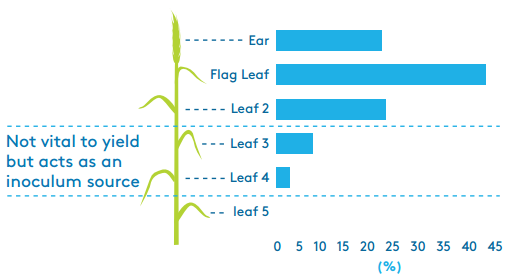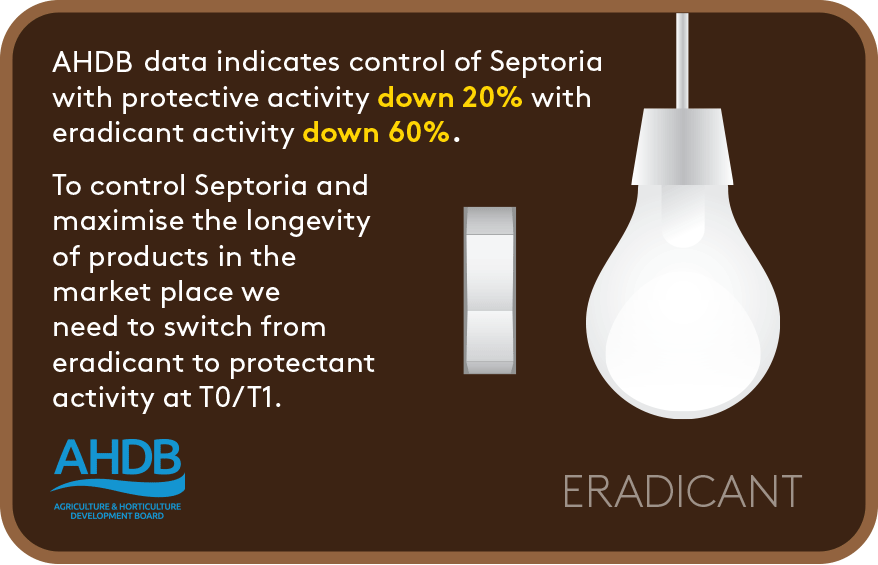We have hit a yield plateau and we are a long way from achieving the genetic potential of the wheat varieties available. How do we overcome this?
Multi-site protectant fungicides need to play an increasingly important role in robust fungicide programmes. It is essential to mix modes of action in order to minimise selection.
Chasing disease throughout the season is no longer sustainable. Strategies need to become more protectant by design, with greater emphasis given to earlier timings.
A 'prevention is better than cure' approach is required and should begin before fungicide decisions with variety choice and seed treatments.


Fungicide programmes to date have relied on products with curative activity, all of which act on a single target site within the pathogen and are therefore vulnerable to resistance. With the decline in azole activity and continuing shift in septoria sensitivity, approaches need to change.



Strobs, triazoles and SDHI's are all single site making them vulnerable. Multi-sites act on several sites within the pathogen.
SINGLE SITE CHEMISTRY acts on a specifc target site. It is not the same target site for all modes of action. Single site mixtures offer short term resistance management through effect disease control.
MULTI-SITE CHEMISTRY by definition acts on multiple sites within the pathogen. By using throughout the programme you minimise selection and thereby the risk of resistance developing. There are no known cases of resistance to multi-site chemistry.
Symptoms can be seen very early in the season. On autumn-sown wheat, water-soaked patches which quickly turn brown may be evident by early December on the lowest leaves.

Use plant protection products safely. Always read the label and product information before use. For further product information,
including warning phrases and symbols, refer to www.adama.com or call The Technical Helpline on 01635 876 622.
Adama Agricultural Solutions UK Ltd. Unit 15, Thatcham Business Village, Colthrop Way, Thatcham, Berkshire RG19 4LW. Telephone 01635 860 555. UKenquiries@adama.com.